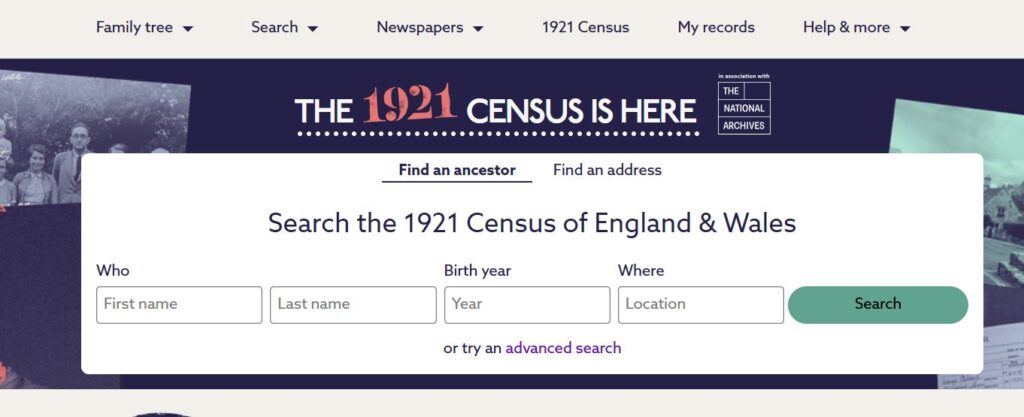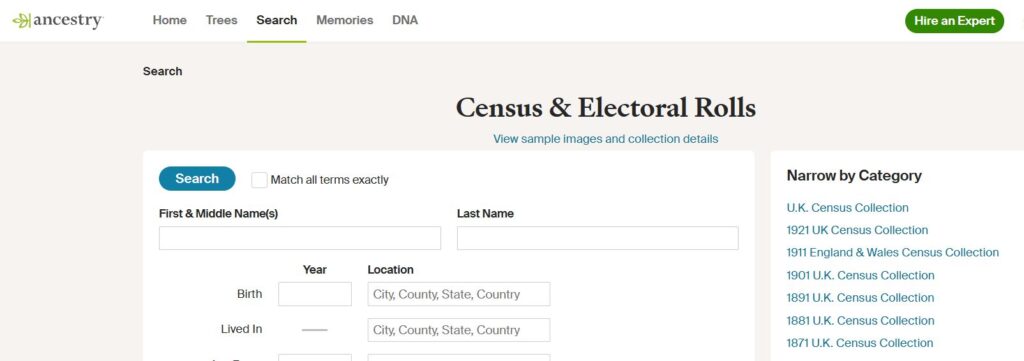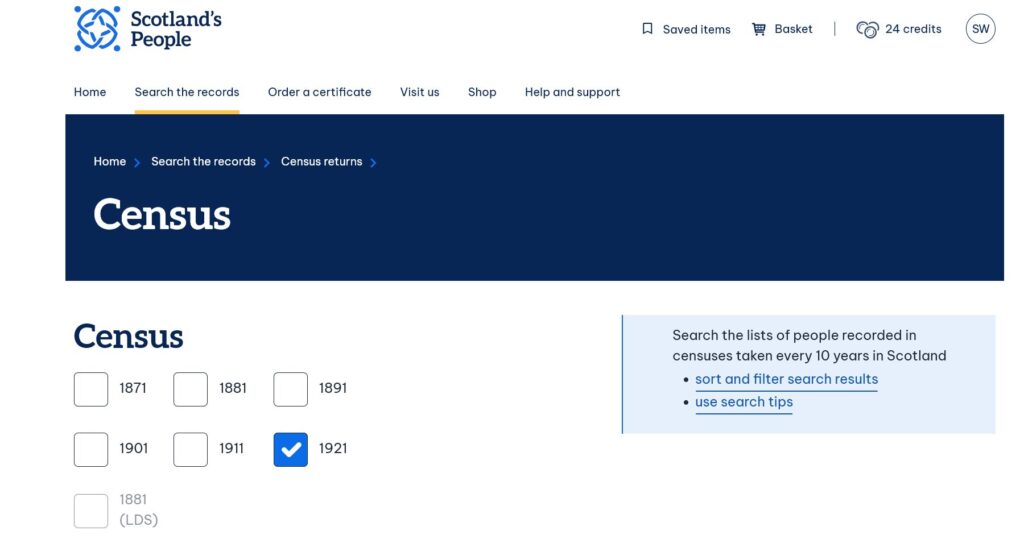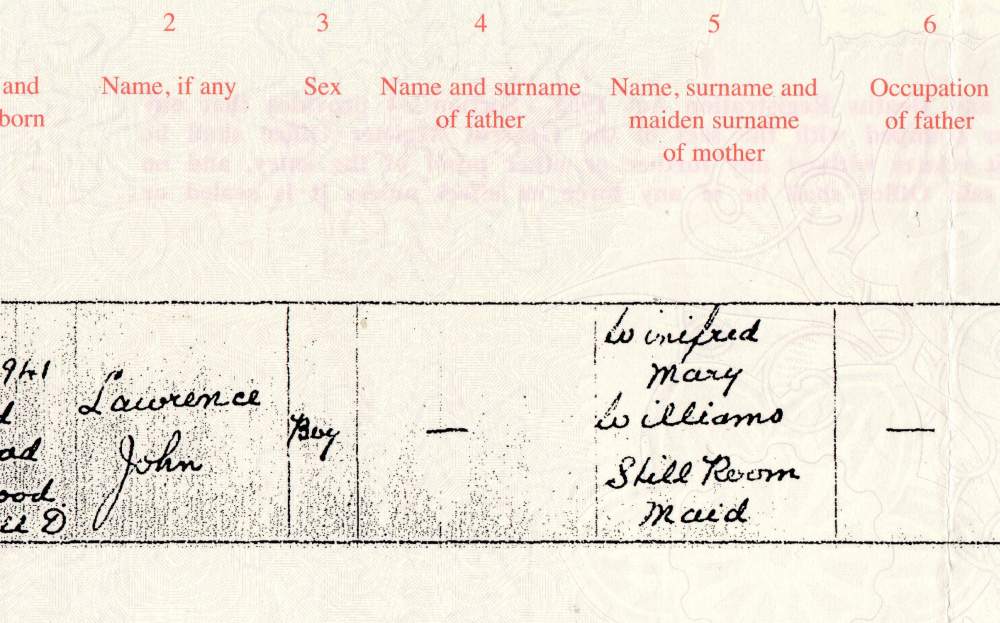The 1921 Census was taken on the evening of the 19th June 1921 in England, Wales, Isle of Man, Channel Islands and Scotland. There was no census taken in Ireland in 1921 due to the War of Independence, the first censuses taken independently in the Irish Free State and in Northern Ireland were on 18 April 1926.
Where can the census be viewed?
Find My Past and Ancestry have the 1921 Census for England, Wales, Isle of Man and the Channel Islands, while Scotland’s People has the Scottish census.
On Find My Past, the census can be accessed from the link on the top navigation menu. Access is included in membership packages or can be purchased as pay-per-view for £3.50 per record.
There is no specific link on Ancestry, instead it’s accessed with all the other censuses by clicking on Search and then Census & Electoral Rolls, or through the Card Catalogue. Access is included in membership packages or can be purchased through pay-as-you-go.
In Scotland, the 1921 Census is available through Scotland’s People and costs 6 credits per viewing.



What information does the census contain?
When compared to previous censuses, some fields were added to the 1921 census. For example, the marital status now includes divorced; for children whether their parents were alive was recorded; in the occupation section the place of work was recorded.
Some fields were also removed, including the question about deafness, dumbness and blindness as it was felt that parents were unwilling to correctly answer this question about their children, and the results weren’t accurate. The questions from the 1911 census, asking the number of years married and children born was also removed in 1921, which is a shame from a genealogical viewpoint as this could be helpful.
The fields on the 1921 Census are:
- Property address
- Names of all the occupants at the address when the census was taken
- Relationship to head of household
- Age (in years and months)
- Sex
- If aged 15 or over, whether single married or divorced
- If aged under 15, whether their mother and father are alive
- Birthplace: county and town
- If born abroad, their nationality
- Whether in education
- Occupation, employer, place of work
- Number and ages of children aged under 16
Transcription errors
From the entries I have looked at, there appears to be a lot more transcription errors on this census than on previous ones. Of course, as with any document, it’s better to view the original. But the transcription errors mean that it can sometimes be difficult to find people. I only found my 2 x great grandfather thanks to a newspaper article around the same time that named the street he was living on, and so I was able to search the returns for that street.
No more census releases for England and Wales until 2052
Make the most of the 1921 census release, because there won’t be another until the 1951 census is released in 2052.
The 1931 census was being stored at the Office of Works building in Middlesex when a fire broke out on the 19 December 1942. The cause of the fire remains a mystery, but it was ferocious and all records stored in the building were destroyed. Although this was during World War 2, a letter stored at the National Archives sent by W A Derrick of the General Registry Office to the Central National Registration Office in Southport confirmed that the fire was not caused by enemy action. There was no census taken in 1941, due to World War Two.
Luckily we have the 1939 Register to fill in some of the gaps, though it isn’t a thorough as a census.


